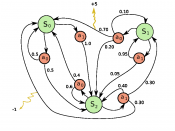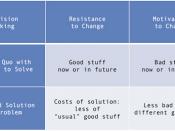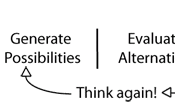Individuals at all levels of management make decisions. The type of decision made is dependant on the specific role or level of status a manager holds within an organisation. Top managers such as CEO's make broad executive type decisions that largely focus on setting organisational goals and the general direction they want the organisation to head, - affecting the entire organisation. Lower and middle managers or supervisors and bosses make decisions based on their working unit, such as setting monthly schedules, handling employee conflicts, allocating pay rises, and recruiting and disciplining employees. Senior managers are therefore experts in the line of industry they are involved in, while supervisors are seen as departmental specialists.
Decision making is a process and not simply a choice of alternatives. Figure 1 illustrates the decision making process, - an 8 step process that begins with the identification of a problem and decision criteria, allocating weights to the criteria, then moves to developing, analysing and selecting an alternative that can resolve the problem, implement the alternative and concludes with evaluating the decisions effectiveness.
- Identification of a problem
- Identification of decision criteria
- Allocation of weights to criteria
- Development of alternatives
- Analysis of alternatives
- Selection of alternatives
- Implement alternative
- Evaluation of decisions effectiveness
Identification of a problem
The decision making process begins with the identification of a problem. The process of decision making in life may be as simple as deciding what you are going to eat for dinner. For managers of organisations however decision making is difficult. Managers become aware of a problem if their current state of affairs is not as successful as they had planned, - such as a decline in sales. Problem identification is not simple or insignificant and before something can be identified as a...


